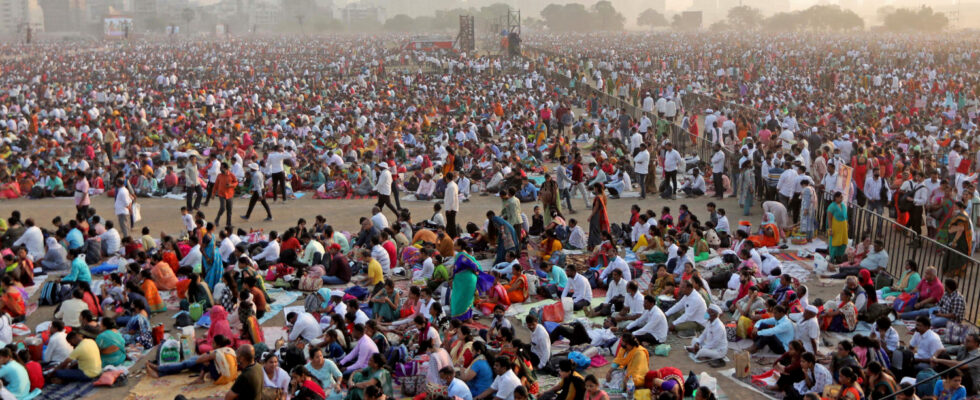India is expected to become the world’s most populous country by mid-2023, surpassing China by nearly three million people, according to United Nations estimates released on Wednesday. India’s population will number 1.4286 billion compared to China’s 1.4257 billion, says a report by the United Nations Population Fund (UNFPA) on the state of the world’s population.
According to official data released earlier this year, China’s population fell last year for the first time since 1960-1961, after a famine that began in 1959 left tens of millions dead in the following the errors of the economic policy of the “Great Leap Forward”.
Paradoxically, this decline in the population in China comes despite the relaxation of the birth control policy in recent years. Ten years ago, the Chinese were only allowed to have one child. Since 2021, they can have three. This decline is generally attributed to the cost of living which has risen sharply in China, as has the cost of raising a child. The higher level of education of women also delays pregnancies.
No census
India has no official data on the number of its inhabitants, as it has not conducted a census since 2011. India’s census, which takes place only once a decade, was to have take place in 2021 but had to be delayed due to the coronavirus pandemic. Logistical obstacles and political reluctance now prevent it from taking place, and it is unlikely that this large-scale exercise will take place anytime soon.
Prime Minister Narendra Modi’s Hindu nationalist government has been accused by critics of deliberately delaying the census so as not to release data on sensitive issues like unemployment ahead of next year’s national elections. India’s economy struggles to provide jobs for the millions of young people entering the job market every year.
Half of the population of the Asian giant is under 30 years old. The country also faces enormous difficulties in producing enough electricity, food and housing for its growing population. Its major cities are already struggling to cope.
8 billion people in the world
According to the Pew Research Center, an American think tank, the Indian population has increased by more than a billion people since 1950, the year from which the United Nations began to establish demographic data. The UNFPA report also estimates that the world’s population will have reached 8.045 billion by the same date.
Other countries, mainly in Europe and Asia, can expect a demographic collapse in the coming decades, according to UN data published last July on the evolution of the world’s population by 2100. Thus in Africa, the population should increase from 1.4 billion to 3.9 billion inhabitants by 2100, representing 38% of the inhabitants of the planet, against approximately 18% today.
Eight countries with more than 10 million people, most of them in Europe, including Greece, Italy, Poland, Portugal and Romania, have seen their populations decline over the past decade, July data shows. last.
Also according to these data, Japan is also experiencing a decline due to the aging of its population, with a drop of more than three million inhabitants between 2011 and 2021. As for the world population, it should only decrease from the years 2090, not without having first peaked at 10.4 billion inhabitants, according to the United Nations.
